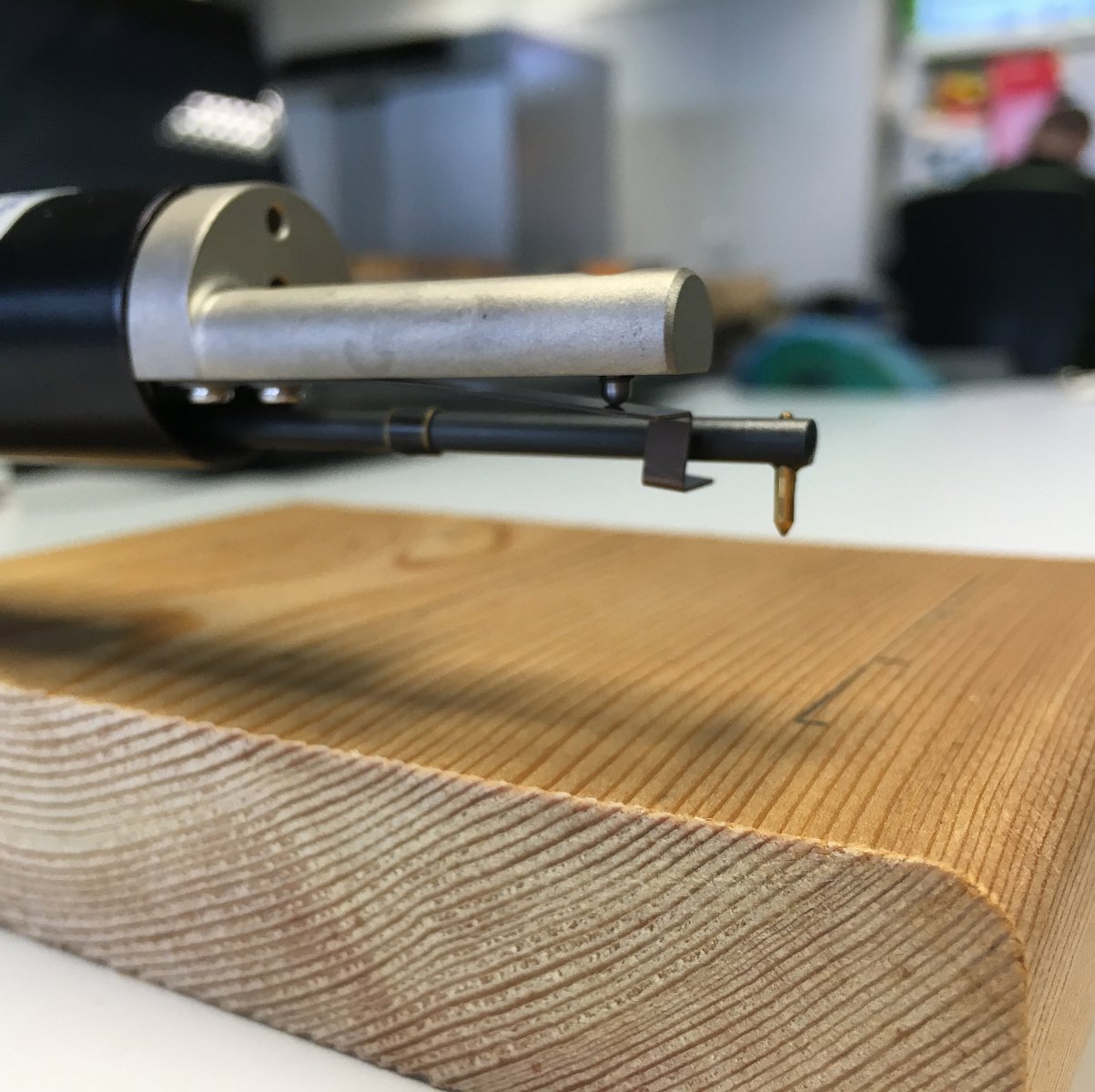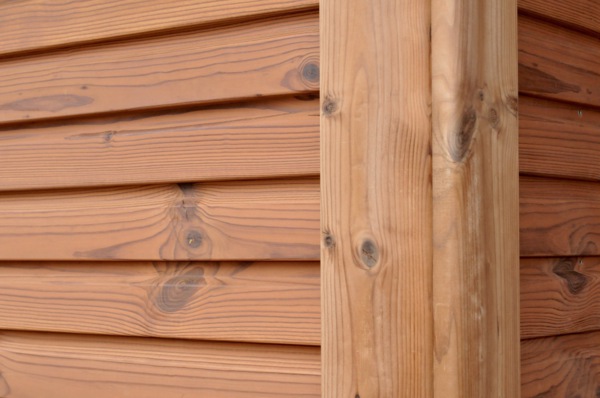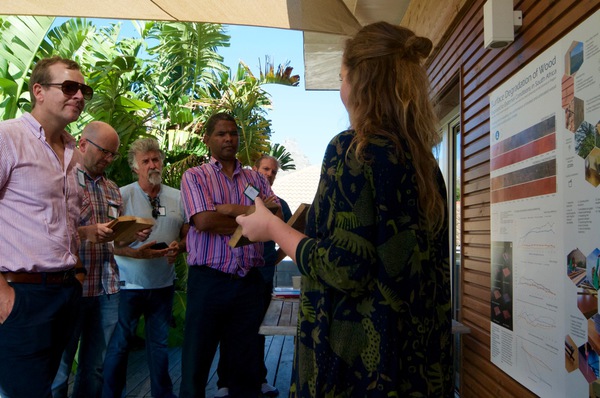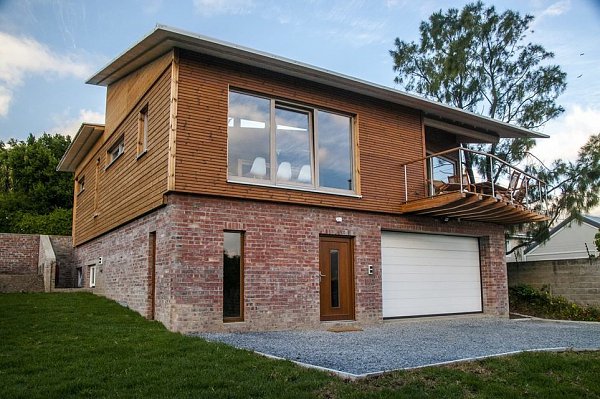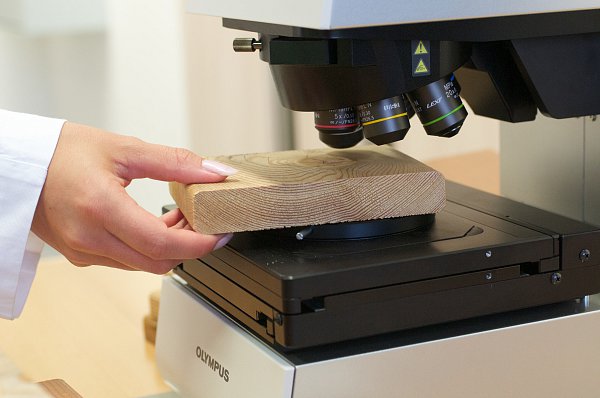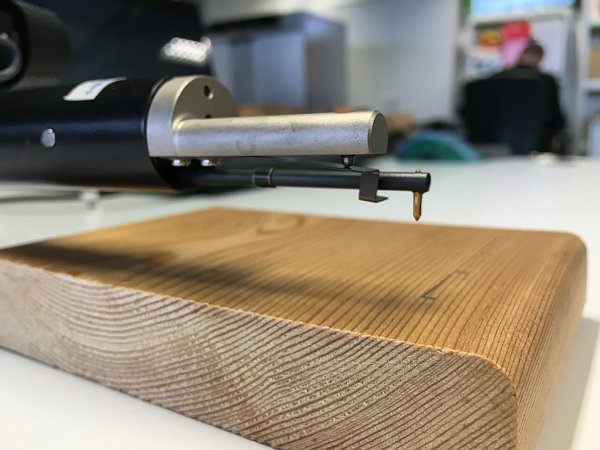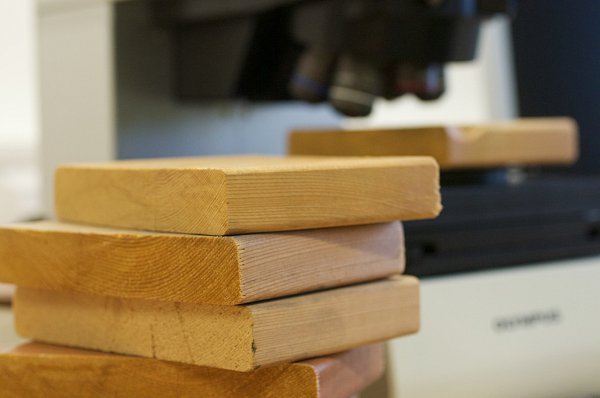Wood in outdoor constructions reacts to the weather and its changes. For its proper use, it is necessary to consider some basic rules (use of durable wood species, proper construction solution, use of surface protection). The Siberian larch wood and thermally modified pine, in European conditions considered as durable, were selected for the façade cladding and terrace decking at Hout Bay House. The test samples were prepared from these wood species, one part of them was left untreated, the other part was treated with two layers of natural oil wood stain UV OSMO. Prepared samples were exposed to natural weathering in special stands facing north in the inclination of 45° (faster degradation in comparison with vertical façade) according to European standards dealing with testing of coatings. The test samples were evaluated based on change of colour, gloss, roughness, wettability and other visual properties during three years of exposure.
To sum up the results from this 3-year experiment, the treated samples generally showed significantly more stable results than untreated ones in the first year of weathering. In that period of weathering, untreated samples distinguished by rapidly increasing colour, roughness and wettability changes. They turned grey already after 4 months of weathering. The formation of mould and cracks which basically ran in the direction of wood fibres was observed on untreated samples with increasing exposure period. The surface wettability (ability to absorb water) of untreated samples increased during exposure and reached the full wettability after 18 months of exposure.
The treated samples were characterized by relatively stable and low colour changes during exposure. The roughness increased at the later stage of weathering, especially in the case of Siberian larch. From the point of view of wettability, they maintained relatively good properties. Approximately after one year of natural weathering, the coating of treated samples started to degrade and more damages in the surface treatment in form of flaking and peeling appeared. At the end of the experiment, after 3 years of weathering, the coating was almost completely damaged, especially in the case of Siberian larch.
Conclusion of the cladding research
When using wood outdoors, we can consider two options - we can either accept the fact that untreated wood eventually turns grey (in the most cases unequally) and gets typical plastic structure, or we can apply suitable surface treatment which will prevent the wood from greying and roughening, but which has to be renewed after several years. The selection of wood and coating type is crucial. Based on the results of this research, visual evaluation confirmed the measured values - the better performance was observed for thermally modified pine, both in the case of treated and untreated samples. In the case of performance of untreated wood, there was no significant difference in comparison with performance of Siberian larch.
HOUSE FULL OF SENSORS
Except the research focusing on surface degradation of wooden facade, there is also temperature and humidity measured in the walls of the timber construction. The sensors are located on the facade, between ventilated air gap and insulation, between insulation and Novatop CLT and in the interior. The measured data are evaluated and will be published on the homepage.

